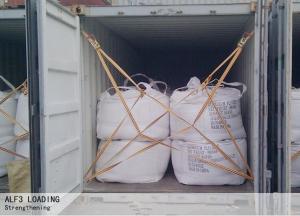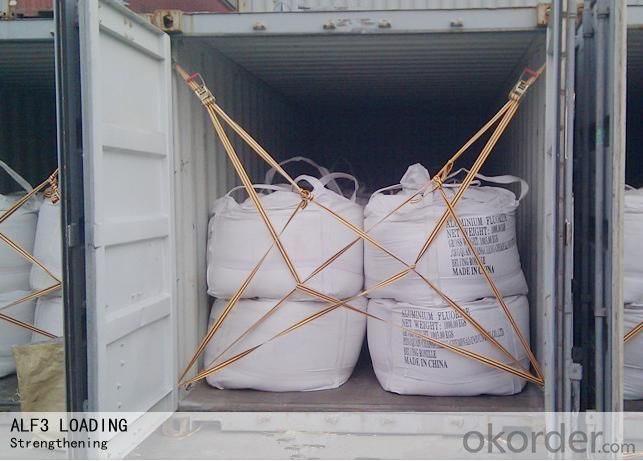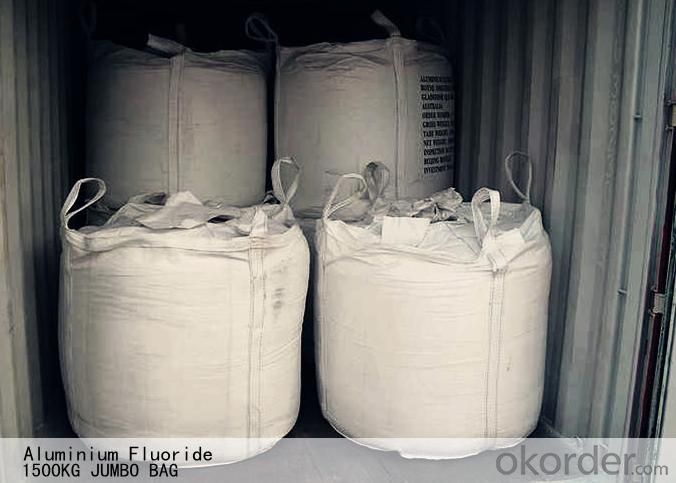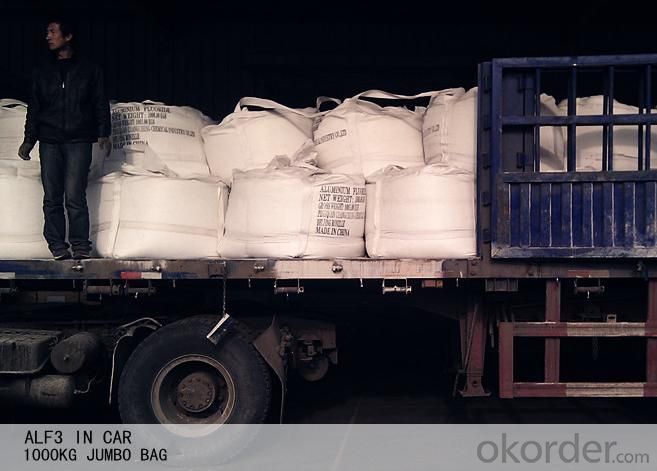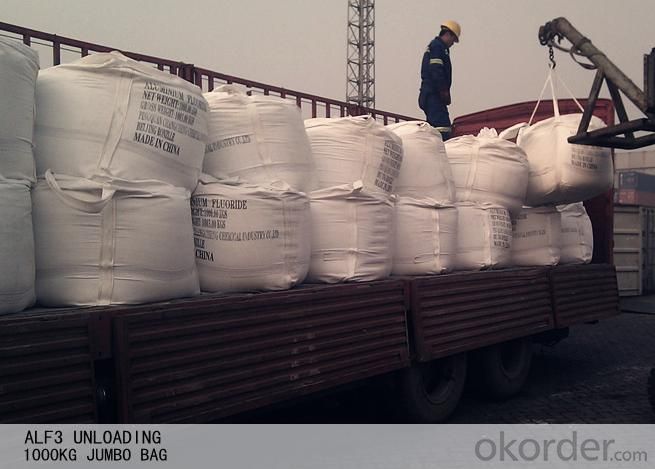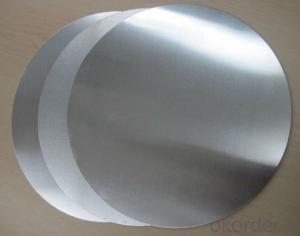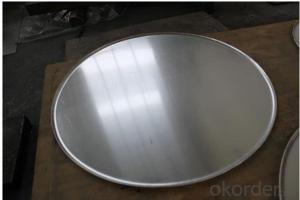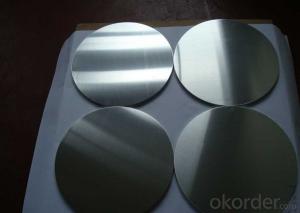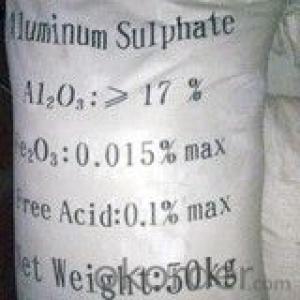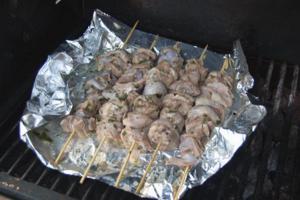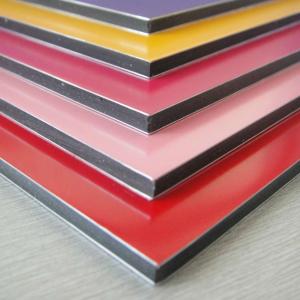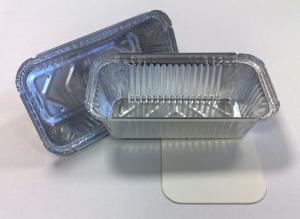Aluminum Anhydrous High Bulk Density Aluminium Fluoride
- Loading Port:
- Xingang
- Payment Terms:
- TT or LC
- Min Order Qty:
- 20mt m.t.
- Supply Capability:
- 30,000mt m.t./month
OKorder Service Pledge
OKorder Financial Service
You Might Also Like
Aluminum Fluoride Anhydrous High Bulk Density
Aluminum is a very versatile metal which is used as construction material in buildings and transportation equipment as well as in consumer goods packages. Aluminum Fluoride (AIF3), is primarily used in the production of aluminum.
Aluminum Fluoride is a critical additive to the molten electrolyte in aluminum metal production. Adding AIF3 allows the electrolytic process to take place at a temperature around 8500C, which is considerably lower than the melting point for aluminum oxide (Al2O3, mp ca. 1,5000C). As a result of its temperature-lowering properties, ALF3 has a definite energy saving effect. Consequently, primary aluminum smelters are the biggest users of Aluminum Fluoride. The high purity of our product contributes to our customers' ambitions towards a pure end-product.
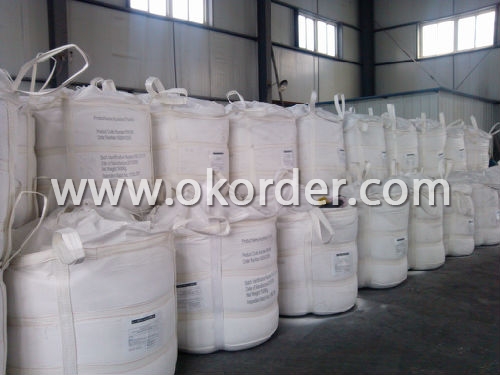
Usage of Aluminum Fluoride Anhydrous High Bulk Density
Additive to aluminium smelter, also, it is a flux for non-ferrous metal, as a zymotic inhibitor in the alcohol and essential oil production and as a fusing assistant for ceramic, enamel and the component of glaze.
Manufacturing Technique of Aluminum Fluoride Anhydrous
Vitriol reacts with Fluorite to create the Hydrogen Fluoride Gas and Anhydrous Fluoride Plaster by heating, then the Hydrogen Fluoride Gas react with dry Aluminum Hydroxide in Fluidized Bed to create to Aluminum Fluoride anhydrous.
Reaction Principle of Aluminum Fluoride Anhydrous
CAF2 + H2SO4 = 2HF + CASO4 →AL(OH)3 + 3HF = ALF3 + 3H20
Methods of Test of Aluminum Fluoride Anhydrous High Bulk Density
Measuring method of chemical analysis and physical properties for aluminum fluoride should accord to YS/T581 or ISO2362ect.
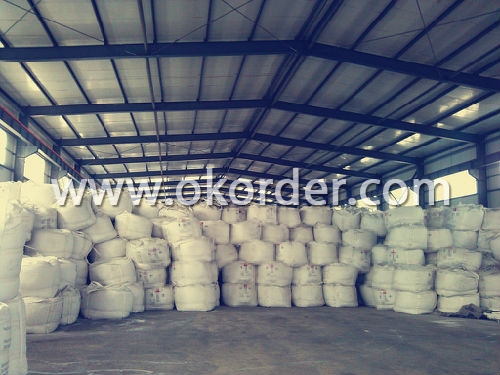
Test Report of Aluminum Fluoride Anhydrous High Bulk Density
SGS, Intertek, Inspectorate, etc.
Packing of Aluminum Fluoride Anhydrous High Bulk Density
In 25kg/50kg/1000kg/1250kg/1500kg double layers plastic woven bags/jumbo bag/ paper bags, pallet or no pallet.
Store and Transportation of Aluminum Fluoride Anhydrous
Store in a cool, dry, well-ventilated warehouse away from incompatible substances. Prevent heat, damp and rain during the transportation. Handle with care, avoid breaking bags.

Standard of Aluminum Fluoride Anhydrous High Bulk Density
Chinese smelters refer to National standard (GB/T 4292-2007). World's smelters specification is available on your request.
Brand No. | Chemical Constituent(mass fraction)% | Physical Properties | |||||||
F | Al |
Na
|
SiO2
|
Fe2O3
| SO42- | P2O5 | Loss of Ignition | Apparent Density(g/cm3) | |
≥ | ≤ | ≥ | |||||||
AF-0 | 61.00 | 31.50 | 0.30 | 0.10 | 0.06 | 0.10 | 0.03 | 0.50 | 1.50 |
AF-1 | 60.00 | 31.00 | 0.40 | 0.30 | 0.10 | 0.60 | 0.04 | 1.00 | 1.30 |
AF-2 | 58.00 | 29.00 | 2.80 | 0.30 | 0.12 | 1.00 | 0.04 | 5.50 | 0.70 |
AF-3 | 58.00 | 29.00 | 2.80 | 0.35 | 0.12 | 1.00 | 0.04 | 5.50 | 0.70 |
- Q: This question asks about the chemical reaction between aluminum and water.
- <p>Aluminum does not react with water under normal conditions. However, when aluminum is heated, it can react with steam to form aluminum oxide and hydrogen gas. The reaction is exothermic and can be represented by the following equation: 2Al + 3H2O 鈫?Al2O3 + 3H2. This reaction is utilized in some industrial processes, but it is not a common occurrence in everyday settings. At room temperature, aluminum is protected by a thin layer of aluminum oxide that forms on its surface, which prevents further reaction with water.</p>
- Q: Can reusing old aluminum foil be utilized for cleaning tasks in kitchen or bathroom areas?
- <p>Yes, old aluminum foil can be used for cleaning purposes in a kitchen or bathroom. It's particularly effective for scrubbing pots and pans, removing burnt-on food, and cleaning glass and tiles. The shiny side of the foil can be used to remove scuff marks from floors and the dull side can be used to scrub away stubborn stains. However, it's important to avoid using foil that has been in contact with acidic or corrosive substances, as it may have become damaged or weakened, and could potentially scratch surfaces. Always test on a small, inconspicuous area first to ensure it doesn't damage the surface you're cleaning.</p>
- Q: This question asks for examples of alloys that have a significant amount of aluminum and are known for their strength and ductility.
- <p>Alloys that are known for their high aluminum content and possess excellent strength and ductility include 6061 aluminum alloy, 7075 aluminum alloy, and 2024 aluminum alloy. 6061 is widely used in structural applications due to its balance of strength, corrosion resistance, and formability. 7075 is one of the strongest aluminum alloys and is used in aerospace and high-strength applications. 2024 is known for its good mechanical properties and is used in aircraft structures and other demanding applications. These alloys leverage the benefits of aluminum, such as low density and high resistance to corrosion, while their specific compositions and heat treatments enhance their strength and ductility.</p>
- Q: Is it possible to recycle aluminum and what are the benefits of doing so?
- <p>Yes, aluminum can be recycled, and it is one of the most recycled materials in the world. Recycling aluminum saves up to 95% of the energy needed to produce new aluminum from raw materials. It also reduces greenhouse gas emissions and conserves natural resources. Recycled aluminum can be used in various applications, from beverage cans to construction materials, making it an environmentally friendly and economical choice.</p>
- Q: What are the positive environmental impacts of utilizing recycled aluminum over newly produced aluminum?
- <p>Using recycled aluminum has several environmental benefits. It conserves natural resources by reducing the need for bauxite mining, which is the primary source of aluminum. Recycling aluminum requires significantly less energy compared to producing new aluminum from raw materials, which can lead to a substantial reduction in greenhouse gas emissions. Additionally, recycling aluminum helps in reducing landfill waste, as it diverts used aluminum products from landfills. Moreover, it decreases the environmental impact associated with the production process, such as water pollution and habitat destruction. Overall, recycling aluminum is a more sustainable practice that contributes to a lower carbon footprint and a healthier environment.</p>
- Q: Is aluminum suitable for use in paint and coating applications?
- <p>Yes, aluminum can be used in paints and coatings. It is often used in the form of aluminum pigments or flakes, which provide a metallic appearance and enhance the durability and corrosion resistance of the coating. Aluminum pigments are also valued for their ability to reflect light and heat, making them useful in applications requiring thermal insulation or reflective properties. Additionally, aluminum can be used in powder coatings, providing a hard, wear-resistant finish.</p>
- Q: This question asks for various applications or purposes that can be served by using aluminum scrap material.
- <p>Aluminum scrap can be repurposed in numerous ways due to its recyclability and durability. Some alternative uses include manufacturing new aluminum products, such as cans, foil, and automotive parts. It can also be used in construction for materials like window frames and roofing. Additionally, aluminum scrap is utilized in the production of everyday items like bicycles, furniture, and even in some types of cookware. Furthermore, it can be employed in the aerospace industry for aircraft parts and in the electronics industry for components. Recycling aluminum scrap not only conserves resources but also reduces energy consumption and environmental impact.</p>
- Q: Is it possible to utilize recycled aluminum to manufacture new items?
- <p>Yes, recycled aluminum can be used to make new products. It is an environmentally friendly and cost-effective process. Recycling aluminum conserves energy, as it requires only 5% of the energy needed to produce new aluminum from raw materials. Recycled aluminum maintains its properties, making it suitable for various applications, including automotive parts, construction materials, and consumer goods. The process also reduces waste and greenhouse gas emissions, contributing to sustainability efforts.</p>
- Q: Compared with other aluminum veneers, what are the advantages?
- 1, exquisite appearance, grain pattern rich, realistic effect, clear texture.2, fire resistance: corrosion resistance, moisture resistance, hardness and strength are compared to wood floating method.3, rust prevention, anti damage, UV protection.4, long service life, can maintain 10-15 years without color, no deformation.5, strong plasticity, can be processed into a variety of complex shapes, the back of which can be filled with insulation, sound insulation, sound-absorbing and other materials, so that its function more rich.6, environmental protection, ecological environment protection, reduce waste of materials and resources.
- Q: Is aluminum a suitable material for constructing aerospace structures?
- <p>Yes, aluminum is widely used in aerospace structures due to its high strength-to-weight ratio, corrosion resistance, and ease of fabrication. It is particularly favored for aircraft frames, wings, and fuselage components. Aluminum alloys are also used in spacecraft and satellite structures for their lightweight properties and ability to withstand extreme temperatures.</p>
1. Manufacturer Overview
| Location | Nanning, Guangxi Province,China |
| Year Established | 2005 |
| Annual Output Value | Below US$1 Million |
| Main Markets | Mid East;Australia;India;Japan;Korea |
| Company Certifications | ISO 9001:2008; |
2. Manufacturer Certificates
| a) Certification Name | |
| Range | |
| Reference | |
| Validity Period |
3. Manufacturer Capability
| a) Trade Capacity | |
| Nearest Port | Xingang |
| Export Percentage | 51% - 60% |
| No.of Employees in Trade Department | 18 People |
| Language Spoken: | English;Chinese |
| b) Factory Information | |
| Factory Size: | Above 800,000 square meters |
| No. of Production Lines | Above 2 |
| Contract Manufacturing | |
| Product Price Range | Average |
Send your message to us
Aluminum Anhydrous High Bulk Density Aluminium Fluoride
- Loading Port:
- Xingang
- Payment Terms:
- TT or LC
- Min Order Qty:
- 20mt m.t.
- Supply Capability:
- 30,000mt m.t./month
OKorder Service Pledge
OKorder Financial Service
Similar products
Hot products
Hot Searches
Related keywords
